Sea cucumbers, celebrations and student internships Understand article
Science in School is published by EIROforum, a collaboration between eight of Europe’s largest inter-governmental scientific research organisations (EIROs). This article reviews some of the latest news from the EIROs.
CERN: High-school students internship programme
This year, CERN is expanding its educational programme as it launches a brand new internship opportunity for high-school students. Initially, the pilot programme will be open to students from five member states: Bulgaria, France, Hungary, Norway and Portugal. For each programme, 24 students aged 16–19 will join CERN for two weeks to gain practical experience in science, technology and innovation.
The programme is a unique opportunity for young people to experience CERN and strengthen their understanding of science in a high-tech environment. The students will visit several CERN experimental sites and will work alongside members of CERN staff. At the end of the programme, the students will have the opportunity to present their work.
For further information, visit the CERN website.
Based in Geneva, Switzerland, CERN is the world’s largest particle physics laboratory.
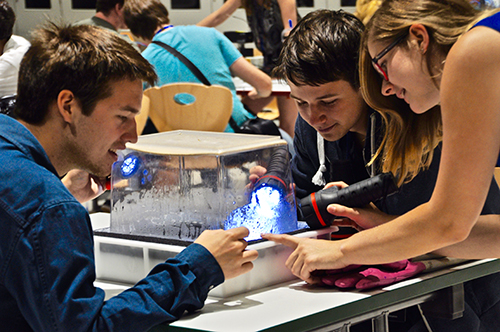
Image courtesy of CERN
EMBL: Study offers approach to treating pain
For many patients with chronic pain, any light touch – even just their clothes touching their skin – can be agony. Now, scientists at the European Molecular Biology Laboratory (EMBL) and the Werner Reichardt Centre for Integrative Neuroscience of the University of Tübingen, Germany, have found a possible approach for producing painkillers that specifically treat this kind of pain.
The scientists have discovered a molecule that, by influencing how stiff or bendy a nerve cell is, affects how sensitive a mouse is to touch and pain. The nervous system and sense of touch are similar in mice and humans, so the results are likely to hold true for people, too. And although problems in cell stiffness are unlikely to be at the root of most patients’ hypersensitivity to touch, controlling how stiff their nerve cells are could nevertheless be an effective way of treating that sensitivity.
For more details, read the full news article.
EMBL is Europe’s leading laboratory for basic research in molecular biology, with its headquarters in Heidelberg, Germany.
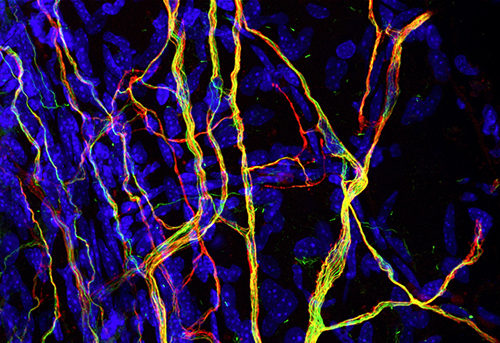
Image courtesy of Laura Castaldi / EMBL
ESA: The new Mars orbiter
ESA’s Trace Gas Orbiter (TGO), a joint endeavour between the European Space Agency (ESA) and the Russian space agency Roscosmos, arrived at Mars on 19 October 2016. TGO’s main goal is to make a detailed inventory of rare gases that make up less than 1% of the atmosphere’s volume, including methane, water vapour, nitrogen dioxide and acetylene. Of high interest is methane, which on Earth is produced primarily by biological activity and to a smaller extent by geological processes such as some hydrothermal reactions. The orbiter will also serve as a data relay for future lander missions.
Soon after its arrival at Mars, TGO tested its suite of instruments in orbit, hinting at the great potential for future observations when it begins its main science mission in 2018.
During 2017, TGO will use sophisticated aerobraking techniques to steadily lower itself to a circular 400 km orbit around Mars. This will be the first time that ESA has used this technology to attain orbit around another body in our Solar System.
Follow the ExoMars mission and some of its first images.
ESA is Europe’s gateway to space, with its headquarters in Paris, France.

Image courtesy of ESA / Roscosmos / ExoMars / CaSSIS / UniBE
ESO: Spinning black hole swallowing star explains a superluminous event
In 2015, an extraordinarily brilliant point of light seen in a distant galaxy was thought to be the brightest supernova ever seen. Dubbed ASASSN-15lh, it was categorised as a superluminous supernova – the explosion of an extremely massive star at the end of its life.
But new observations from several observatories, including the European Southern Observatory (ESO), have now cast doubt on this classification. Instead, a group of astronomers propose that the source was an even more extreme and very rare event – a rapidly spinning black hole ripping apart a passing star that came too close. Known as a tidal disruption event, this has been observed so far only about 10 times.
In the process, the star was ‘spaghettified’, and shocks in the colliding debris as well as heat led to a burst of light, giving the appearance of a very bright supernova explosion.
Read the full press release here.
ESO is the world’s most productive ground-based astronomical observatory, with its headquarters in Garching, near Munich in Germany, and its telescopes in Chile.
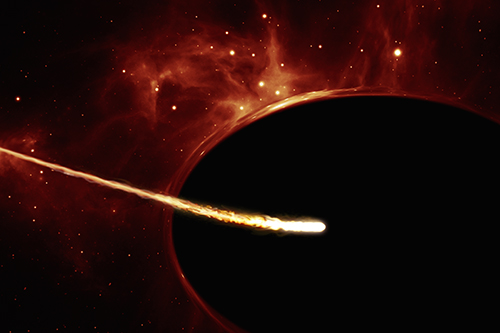
Image courtesy of ESO, ESA / Hubble, M Kornmesser
ESRF: Scientists discover how sea cucumbers change shape
Sea cucumbers can rapidly change the stiffness of their bodies, and scientists from Queen Mary University of London, UK, have discovered how they do it using data collected at the European Synchrotron Radiation Facility (ESRF).
All animals have collagen, but one group of marine invertebrates – the echinoderms, which include starfish and sea cucumbers – have evolved collagenous tissues with a unique property: they can rapidly change their stiffness. This type of collagen is known as mutable collagenous tissue and is controlled by the nervous system. It is useful when, for example, the animals need to ‘turn to jelly’ so they can avoid predation. However, the mechanisms by which the sea cucumber can change its stiffness were not known until now.
The scientists analysed the body wall of sea cucumbers at ESRF. The team used the technique of time-resolved synchrotron small-angle X-ray diffraction combined with in situ tensile testing carried out at the high-brilliance beamline ID02. The research can provide a useful basis for developing novel biomaterials for applications in medicine.
For more details, read the full press release on the ESRF website.
Read more in the research paper:
Mo J et al. (2016) Interfibrillar stiffening of echinoderm mutable collagenous tissue demonstrated at the nanoscale. Proceedings of the National Academy of Sciences of the USA 113(42): E6362–E6371. doi: 10.1073/pnas.1609341113
Situated in Grenoble, France, ESRF operates the most powerful synchrotron radiation source in Europe.
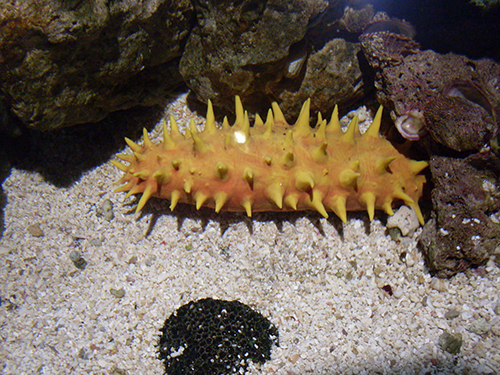
Image courtesy of Maxim Gavrilyuk
EUROfusion: A well-earned holiday for JET
EUROfusion’s flagship device, the Joint European Torus (JET), has gone on a well-deserved holiday, starting on 15 November 2016, after finishing one of the most successful sets of experiments in its history.
Located at Culham, UK, JET is a fusion device known as a tokamak, and is currently the only device capable of using fuels that will be used in future fusion plants. These fuels are hydrogen isotopes called deuterium and tritium.
JET’s recent success shows that it is ready to handle experiments with the ‘real’ fusion fuels. But perhaps more importantly, it means that JET has laid solid foundations that ITER can build on. ITER is the world’s largest fusion experiment, which is under construction in Cadarache, France. When it is completed, ITER should be able to prove that obtaining energy from fusion is possible. Once realised, fusion energy has the potential to fulfil our growing energy demands by providing carbon-dioxide-free, sustainable energy.
And, although JET may be on a short vacation, the researchers and engineers are certainly not. They are busy upgrading the device so that it is ready to begin the next set of experiments later this year.
To learn more:
Read the full press release on the EUROfusion website.
And read more about the recent experimental success of JET.
EUROfusion comprises 28 European member states as well as Switzerland and manages fusion research activities on behalf of Euratom. The aim is to realise fusion electricity by 2050.
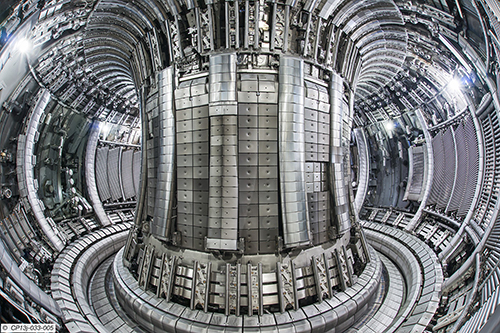
Image courtesy of EUROfusion
European XFEL: State-of-the-art instruments coming together
When the first users come to the European X-ray Free Electron Laser (European XFEL) this summer, they will work at one of two state-of-the-art scientific instruments offered by the facility in the initial phase. These instruments, called FXE and SPB/SFX, are currently being assembled in the underground experiment hall.
When complete, the instruments will be able to use European XFEL’s 27 000 X-ray flashes per second to perform unprecedented studies of matter. FXE, for example, will be used to observe ultrafast processes and reactions at the molecular scale, such as the movement of atoms and the rearrangement of electronic charge clouds within a molecule undergoing a chemical change. SPB/SFX will determine the structure of biomolecules, atomic clusters, viruses and more. It could also help scientists come closer to what is known as the ‘holy grail’ of structural biology: being able to determine the structure of molecules without first arranging them in crystal forms.
Scientists expect that results from these instruments will lead to a better understanding of many processes, enabling the development of better medications and potentially leading to more efficient methods of energy capture and storage. Four more instruments will become available to users by 2018 as European XFEL’s initial configuration reaches completion.
European XFEL is a research facility currently under construction in the Hamburg area in Germany. Its extremely intense X-ray flashes will be used by researchers from all over the world.
Image courtesy of European XFEL
ILL: 50th birthday celebration
The Institut Laue-Langevin (ILL) was founded 50 years ago, on 19 January 1967, with the signing of an agreement between France and Germany. What began under the impetus of Franco-German reconciliation is now a shining example of international co-operation: today ILL has 13 member states, and many other countries from around the world participate in its research programme.
ILL owes much of its long-lasting success to its ability to adapt quickly in an ever-changing research environment. By constantly upgrading and developing its facilities, ILL has ensured that it remains state-of-the-art. And indeed, despite the increasing complexity of operating a nuclear facility and the ever-more stringent demands of safety authorities, ILL will continue to set the standards for future neutron sources.
ILL is an international research centre at the leading edge of neutron science and technology.
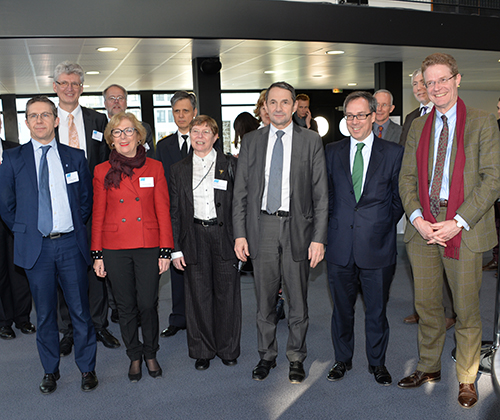
Image courtesy of ILL
EIROforum
EIROforum combines the resources, facilities and expertise of its member organisations to support European science in reaching its full potential.
To learn more, see also the list of EIROforum-related articles in Science in School or browse the other EIRO news articles.






